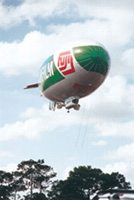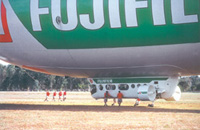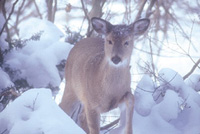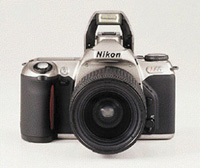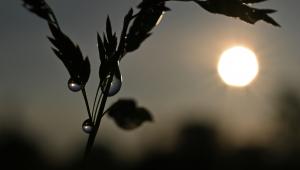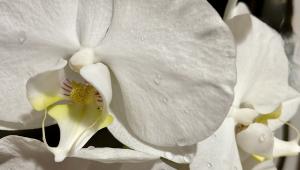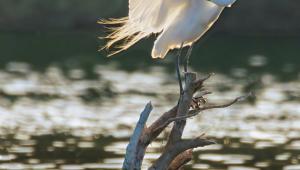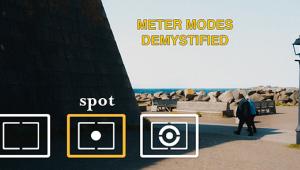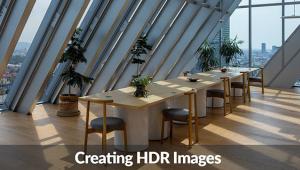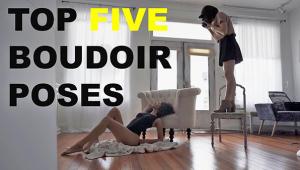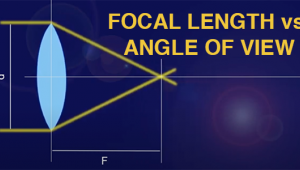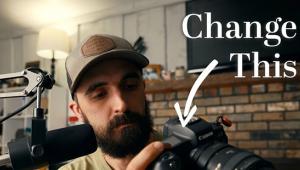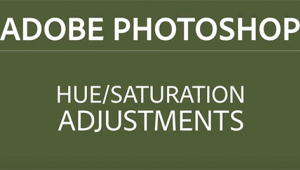The Full Featured Nikon N65 35mm AF SLR
Nikon recently introduced another new autofocusing 35mm SLR that's loaded with features and override capabilities which make it suitable for any type of 35mm photography. This easy to use, compact-sized, camera should appeal to beginners buying their first precise SLR as well as seasoned photographers who just need another body that will accept the Nikon AF mount lenses and accessories they already own. All of the controls are conveniently positioned around the top and front of the body where they are easily identified, accessed, and adjusted. They are large and well marked, minimizing any possible confusion about their functions. I particularly liked the easy method of engaging the auto-bracketing feature by simply pressing a prominent button near the main mode control dial. In addition, you can quickly adjust the autofocusing to any of the five patterns by pressing another button beside the lens. A prominent knurled dial on the top left of the body contains large letters and pictographs showing the multitude of optional modes available. These include the typical portrait, scenic, close-up, action (continuous shooting), and night scene. A convenient flash pops up from above the prism when a button is pressed on the left of the prism. If you require a more powerful accessory flash, there is a dedicated hot shoe just above the viewfinder window. Additionally, a variety of advanced flash modes are available. |
|||
In A and S (Aperture/Shutter priority) modes, adjustments are made with a knurled knob behind the LED panel. In full M (Manual) mode only shutter speeds are adjusted with the knob while the lens aperture is adjusted by using the click-stop diaphragm ring at the rear of the lens. The viewfinder is bright with nothing protruding in the field of view. Informative data about how the camera is set appears in an LCD display below the viewfinder field. This includes: focus indicator, focus area selected, shutter speeds, aperture, analog exposure compensation scale, +/- exposure compensation, and flash ready light/flash recommended indicator. Sim-ilar information, plus additional data, is repeated on the LCD panel located behind the shutter release button. |
|||
Film loading is conventional with a pop open door on the rear of the body. Once the leader end of 35mm film is positioned near the large take-up spool and the door closed, everything is automatic. An exceptionally thorough, English language only, instruction book, plus a quick reference guide with example photos showing results from each optional mode, are included. This full-featured SLR is exceptionally light in weight and has an especially easy grip area on the right side that when used along with a protrusion on the back makes it easy to keep your finger and thumb in exactly the right position for a firm, steady grip. It accepts newer Nikkor AF interchangeable lenses as well as all of the older Nikkor F mount lenses. Practical Test Results
|
|||
Practical tests were made using a variety of sensitive slow speed color slide film plus a number of rolls of color negative film. In every instance, the images were consistently well exposed even when made under a broad range of difficult lighting situations. The resulting images were well detailed, quite sharp and exhibited excellent color. Autofocusing was rapid and precise with a variety of subjects and light levels. The handy, small built-in flash always covered the field evenly, even when used with a wide 28mm lens. It produced just the right amount of fill light when used in daylight or provided all of the main lighting when it was the sole or primary light source. No matter what type of SLR photography you do, this new, programmed automatic/manual model from Nikon should do the job quite well. If your local dealer does not have data on the Nikon N65, you can obtain it by calling Nikon toll free at (800) 645-6687, or accessing the web site at: www.nikonusa.com |
|||
Technical Specifications |
- Log in or register to post comments
